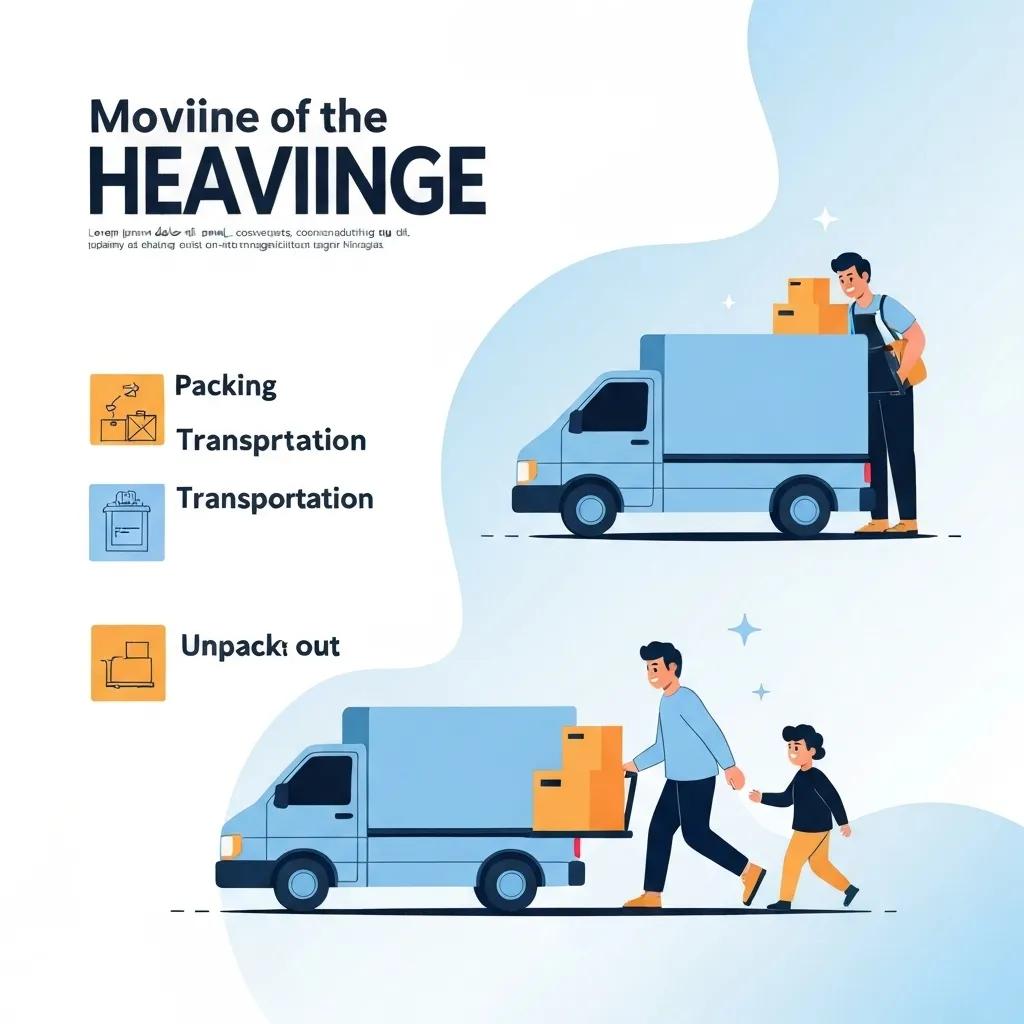
How Moving Affects Your Homeowners Insurance: What You Need to Know About Coverage, Policy Changes, and Costs
Moving to a new home triggers critical changes in your homeowners insurance policy, and failing to understand those shifts can leave you exposed to financial risk. This guide shows you how notification, policy review, and new coverage work together to prevent protection gaps and control costs. You will learn:
- How your existing policy behaves when you relocate and what you must review.
- Steps to secure a tailored homeowners insurance plan for your new property.
- Which protections cover belongings during transit and storage.
- Strategies to avoid overlapping or lapsed policies.
- Special rules for out-of-state moves, rentals, and vacant homes.
- The impact of local hazards and crime rates on your premiums.
- Differences between homeowners insurance and dedicated moving insurance.
By following this roadmap, you’ll enhance risk management throughout every stage of your move and ensure seamless coverage.
What Happens to Your Current Homeowners Insurance When You Move?
Your current homeowners insurance policy does not automatically transfer to a new address because each property carries unique risks and valuation factors. Insurers require fresh underwriting to align dwelling coverage, liability limits, and personal property protection with the characteristics of your next residence. Understanding this foundation helps you avoid coverage lapses and compliance issues as you plan your move.
Can You Transfer Your Home Insurance Policy to a New Home?
No, homeowners insurance policies generally cannot transfer between properties. Insurers underwrite each policy based on the addressed home’s construction, location, age, and local hazards, so a new dwelling triggers a fresh risk assessment. Attempting to keep the old policy in force at a different address could violate underwriting guidelines and leave gaps in protection. Confirming a new policy ensures your lender’s requirements and personal liability limits align with your new residence’s specifics.
How and When Should You Notify Your Insurer About Your Move?
Notify your insurer 30 to 60 days before moving to align cancellation of the old policy with activation of the new one. Contacting your provider early allows them to prepare quotes for the new property, explain any endorsements required, and adjust premium billing cycles. Providing your move date, new address, estimated replacement cost, and occupancy plans ensures the new policy’s effective date coincides with your closing date and avoids any uninsured period.
What Should You Review in Your Existing Policy Before Moving?

Review dwelling limits, personal property coverage, and exclusions to confirm whether off-premises or temporary storage is included.
- Coverage limits – Ensure your dwelling and contents limits reflect current replacement costs.
- Named perils and exclusions – Check if moving-related risks, such as mishandling by movers or flood damage, are covered or excluded.
- Deductible and liability – Confirm the deductible for transit claims and your liability protection in case someone is injured during removal.
Assessing these attributes before your move clarifies where supplemental coverage or endorsements may improve protection for transit and storage stages.
How to Secure Home Insurance for Your New Property After Moving
Securing homeowners insurance for a new property involves selecting a policy that reflects its construction materials, age, regional hazards, and security features to optimize premiums and coverage. Proper timing and comparison of quotes enhance affordability and ensure your mortgage lender’s requirements are met before closing.
What Factors Affect New Home Insurance Premiums?
Several location and home characteristics influence the premium you pay:
| Risk Factor | Impact on Premium | Rationale |
|---|---|---|
| Geographic Hazard Zone | +15–50% | Flood, wildfire, or earthquake areas demand higher endorsements |
| Building Materials | −5–20% or +10–30% | Brick or stucco reduces risk; older wood-frame homes raise exposure |
| Home Security Systems | −5–15% | Burglar alarms and monitored smoke detectors lower theft and fire claims |
| Roof Age and Condition | +10–25% if >15 years old | Older roofs have higher failure and water-damage risk |
| Proximity to Fire Station | −5–10% | Faster emergency response decreases property loss severity |
By understanding these attributes, homeowners can make targeted upgrades—such as installing a sprinkler system—that directly improve their coverage terms.
How Location Affects Home Insurance Premiums
This research directly supports the article’s explanation of how geographic hazard zones, crime rates, and proximity to fire departments influence new home insurance premiums and coverage requirements.
When Is the Best Time to Purchase New Home Insurance?
Purchasing your new policy at least 15 days before closing ensures continuous protection from the sale completion onward. Starting coverage early satisfies your mortgage lender’s requirement for proof of insurance, locks in current rate tables, and prevents lapses if the closing date shifts unexpectedly. Aligning the effective date with your closing brings uninterrupted dwelling, liability, and contents coverage.
How to Compare New Home Insurance Quotes Effectively?
Effective comparison requires evaluating both price and policy features across multiple insurers:
- Request quotes for identical coverage limits, deductibles, and endorsements.
- Check insurer financial ratings for claims-paying ability and customer service.
- Compare bundled discounts, such as auto-home packages or security system credits.
- Review claim processing timelines and average settlement amounts.
- Verify policy wording on exclusions for natural disasters, water backup, and transit losses.
These steps support a balanced decision based on long-term value, not solely upfront premium.
What Coverage Do You Have for Your Belongings During the Moving Process?
Standard homeowners insurance extends off-premises coverage to personal property while moving, but only for specified perils and typically at a reduced limit. Understanding the boundary between your policy and moving company protection helps you manage risk during transport and storage.
Does Homeowners Insurance Cover Personal Property in Transit?
Homeowners insurance provides limited transit coverage for named perils such as fire, theft, and lightning while your possessions are en route.
- Fire or explosion damage during loading and unloading
- Theft from a locked moving vehicle
- Lightning strikes or vandalism during transport
Getting the right insurance coverage for moving
This information clarifies the extent of coverage provided by standard homeowners insurance during a move and highlights the distinct role of moving company liability options, directly supporting the article’s sections on personal property in transit and differences from moving company insurance.
Because breakage or mishandling by movers is not covered, this protection benefits homeowners by reducing financial loss from catastrophic events, but it should be paired with moving company liability for full transit security.
How Does Moving Company Insurance Differ from Homeowners Coverage?

Moving company liability insurance protects your goods under two main options:
- Released Value Protection – Covers loss or damage at a basic rate (e.g., $0.50 per pound).
- Full-Value Protection – Insures the replacement cost of lost or damaged items with deductible options.
Is Your Property Covered While in Temporary Storage Units?
Off-premises coverage in homeowners insurance typically extends to storage for up to 30 days at a limited percentage of your personal property limit.
- Common limit: 10–25% of contents coverage
- Exclusions: flood, earthquake, vermin, or breakage
Securing additional storage insurance can improve limits and protect against risks excluded by your primary policy, maintaining continuity from your old home to the new address.
How Can You Avoid Coverage Gaps and Manage Overlapping Policies When Moving?
Avoiding uninsured periods and unnecessary premium overlap requires precise timing and coordination between cancellation and new policy effective dates. A clear transition plan prevents liability and property risk exposures during relocation.
Should You Maintain Dual Coverage for Old and New Homes?
Maintaining both policies for a brief overlap secures continuous protection on closing day and covers your personal liability across both addresses.
- Activate new policy ten days before closing.
- Keep old policy active until deed transfer is confirmed.
- Confirm both insurers acknowledge the overlap to avoid double billing issues.
This strategy improves coverage reliability by spanning any delays or unexpected changes in closing schedules.
When and How Should You Cancel Your Old Home Insurance Policy?
You should cancel your old homeowners insurance policy immediately after settlement, aligning the cancellation date with your new policy activation.
- Notify insurer on closing day with proof of sale completion.
- Request final premium refund for unused days.
- Confirm cancellation in writing and obtain a release letter for your mortgage lender.
Following these steps ensures seamless financial reconciliation and continuous coverage throughout the move.
What Are the Risks of Coverage Lapses During Relocation?
Coverage lapses expose you to liability and property damage costs if a claimable event occurs outside active policy periods.
- Uninsured loss of belongings during unpacking
- Liability claims from injuries on either property
- Mortgage lender penalties for lack of cover
Maintaining active policies through the transition period supports comprehensive risk management and prevents unexpected out-of-pocket expenses.
What Special Insurance Considerations Apply to Different Moving Scenarios?
Different relocation scenarios—out-of-state moves, rentals, and vacant properties—each require tailored insurance solutions to address statutory, occupancy, and risk factors.
How Does Moving Out-of-State Affect Your Homeowners Insurance?
- Agent licensing must align with the new state’s insurance regulator.
- Underwriting standards vary by region (e.g., snow load, coastal wind).
- New endorsements for state-specific perils, such as sinkhole coverage.
Recognizing these factors safeguards your compliance and ensures policy terms match regional risk.
What Insurance Do You Need When Moving to a Rental Property?
Renters insurance provides personal property and liability protection at a lower cost, filling gaps left by a landlord’s building coverage.
- Personal items – Covers theft, fire, and water damage.
- Liability – Protects against guest injuries and property damage.
- Additional living expenses – Pays relocation costs if your rental becomes uninhabitable.
Securing renters insurance before you move in enhances tenant risk management and complements your landlord’s coverage.
How Is Vacant Property Insurance Different During a Move?
Vacant property insurance offers specific endorsements for unoccupied homes by increasing liability limits and covering risks excluded under standard policies.
| Coverage Aspect | Standard Exclusion | Vacant Endorsement |
|---|---|---|
| Vandalism and Theft | Not covered if unoccupied >30 days | Covered with higher deductible and limits |
| Liability for Injuries | Excluded when property is vacant | Included under premises liability extension |
| Water Damage | Limited to active homes | Expanded to cover plumbing failures and leaks |
By adding a vacant endorsement, homeowners protect their asset from unmonitored risks during prolonged relocation.
How Do Location-Specific Risks Influence Your New Home Insurance After Moving?
Regional hazards and community characteristics directly shape your premium rates and coverage requirements, reflecting local threat environments and safety infrastructure.
How Do Natural Disasters Affect Home Insurance Costs in New Areas?
- Flood zones – Require separate flood insurance under national schemes.
- Wildfire areas – Demand wildfire coverage with mitigation credits for defensible space.
- Earthquake belts – Need earthquake endorsements with high deductibles.
This alignment ensures property valuations remain intact even under severe natural events.
What Role Do Crime Rates and Local Factors Play in Premium Changes?
Insurers adjust premiums according to local crime statistics, municipal safety measures, and community watch programs to balance theft and vandalism exposures.
- High burglary rates can increase personal property premiums by 10–20%.
- Active neighborhood watch schemes may earn discounts of 5–10%.
- Proximity to police stations and fire departments influences liability and dwelling rates.
Understanding these relationships allows homeowners to improve local security features and negotiate better terms.
What Are the Key Differences Between Homeowners Insurance and Moving Insurance Options?
Homeowners insurance and moving company coverage serve complementary roles by addressing distinct risk domains: property perils versus transit mishaps.
How Does Moving Company Liability Insurance Protect Your Belongings?
Moving company liability insurance covers damage or loss resulting from their handling and transport operations under two main frameworks:
- Released Value Protection – Basic coverage at a low per-pound rate, ideal for budget moves.
- Full-Value Protection – Replacement cost coverage with optional deductibles, suitable for high-value possessions.
This model enhances overall protection by covering dents, scratches, and other transit-related damage that homeowners policies exclude.
When Should You Consider Third-Party Moving Insurance?
Third-party moving insurance offers an additional layer of risk transfer when:
- You have antique or high-value items not fully covered under released value limits.
- You move internationally or across remote regions with higher handling risks.
- Your homeowners policy has low off-premises limits or narrow peril definitions.
Opting for third-party coverage ensures maximum financial recovery for specialized or irreplaceable goods.
How Do Homeowners Insurance and Moving Insurance Complement Each Other?
Homeowners insurance and moving insurance together form a comprehensive protection strategy:
- Homeowners insurance covers named perils off-premises such as fire and theft up to specified limits.
- Moving company coverage addresses mishandling, negligence, or accidental damage during transit.
By layering these policies, homeowners achieve end-to-end coverage from packing at the old residence to unpacking at the new home.
Moving involves multiple risk transitions—from occupancy changes and transit to storage and local hazards. By reviewing existing policies, coordinating cancellation and activation dates, selecting a customized new policy, and supplementing with moving-specific coverage, homeowners can maintain seamless protection and control premium costs throughout every stage of relocation. Continuous notification, strategic overlap, and scenario-based endorsements ensure that properties and possessions remain safeguarded under the right combination of coverages. Whenever in doubt, consulting an insurance professional will help tailor solutions to your move’s unique risks and regulatory requirements.

